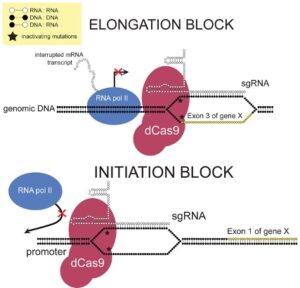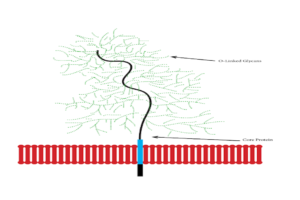
Many important discoveries in human biology that affect how we treat disease and understand human development were not made by studying the human body. Instead, these discoveries were made by studying the biological processes of organisms like mice, fish, and worms. Model organisms are species that are extensively studied to understand biological phenomena that provide insight into the functions of other organisms. Researching these organisms explores the basic biology and chemistry of life [1]. Why choose to study a model organisms instead of the organism of interest? Research of human biology, development, or genetics on humans is complicated and poses ethical challenges in many situations. In humans it is very difficult to separate the effects of a gene from the effects of the environment. However, with models, variables of interest can be engineered and confounding variables are more easily controlled [2].
If scientists want to learn about a metabolic process that only occurs in eukaryotes, a mouse or worm works as a model organism. Single-celled yeasts are advantageous in the study of processes conserved across all life [2].Many useful model organisms share similar traits such as small size, short generation time, the ability to be easily manipulated, and the ability to survive in a controlled environment.
Model organisms have led to many important discoveries in science. C. elegans, a small nematode, was the first animal to have its genome completely sequenced in 1998. Not only was this an achievement, it also provided a model for sequencing that was used in the Human Genome Project. The C. elegans genome is a tool that is still used today to understand the function of eukaryotic genes [3]. Furthermore, studies of single-celled yeast have led to discoveries into how cells divide—information that is beneficial to cancer research in humans [1].
Researchers use model organisms to understand basic biology in research around the world, including at University of Wisconsin-Madison. Researcher Dr. Jeff Hardin at UW-Madison uses C. elegans to study molecular processes that control cell movements and adhesions in embryonic development. This research may shed light on mechanisms of cancer metastasis and events that lead to common birth defects. A recent study published by the Hardin Lab characterized protein SORB-1. It is involved in focal adhesions, structures that transmit force between the extracellular matrix and cytoplasm of cells [4]. Research using C. elegans can contribute to understanding of basic cellular process including cellular development and wound repair [4].
Dr. Andrew Bent is another researcher at UW-Madison who uses model organisms to understand basic biology. His research into plant disease resistance uses the plant Arabidopsis thaliana to understand the plant immune system. Recent research in the Bent Lab developed knowledge of poly(ADP-ribosyl)ation (PARP) in the basal defense response of Arabidopsis. PARP is part of the plant response to biotic stress and can help understand how plants resist disease [5].
Research using model organisms can help understand plants, animals, and microbes and lead to discoveries that impact our everyday lives through life-saving medicine and a stable food supply. There are many historical and recent discoveries that have been made using model organisms. Will this type of research continue to be useful as we understand more of the fundamental mechanisms of biology? As other methods of study such as computer modeling become more sophisticated, the use of model organisms may decrease [1]. However, considering the enormous amount of unanswered questions in basic biology, research using model organisms will remain an integral part of science [6]. Understanding basic biology will continue to benefit society, so it is important that research using model organisms continue.
References
- Using Research Organisms to Study Health and Disease. NIH National Institute of General Medical Sciences. November 2018. Available from: https://www.nigms.nih.gov/education/Pages/modelorg_factsheet.aspx. Cited March 2, 2019.
- Reed L, Baer F, Edison S. Considerations When Choosing a Genetic Model Organism for Metabolomics Studies. Current Opinion in Chemical Biology. 2017; 36: 7-14
- Wilson R. How the Worm Was Won: the C. elegans Genome Sequencing Project. Trends in Genetics. 1999; 15: 51-58
- Loveless T, Qadota H, Benian M, Hardin J. Caenorhabditis elegans SORB-1 Localizes to Integrin Adhesion Sites and is Required for Organization of Sarcomeres and Mitochondria in Myocytes. Molecular Biology of the Cell. 2017; 28: 3621-3633
- Briggs G, Adams-Phillips L, Keppler B, Zebell S, Arend K, Apfelbaum A, Smith J, Bent, A. A Transcriptomics Approach Uncovers Novel Roles for Poly(ADP-ribosyl)ation in the Basal Defense Response in Arabidopsis thaliana. PLOS One. 2017; 12: 1-30
- Hunter P. The Paradox of Model Organisms. European Molecular Biology Organization. 2008; 9: 717-720.
Related Posts
Mechanisms of Metabolic Robustness Discovered in E. Coli
Figure 1: This diagram demonstrated how CRISPR interference (CRISPRi) works...
Read MoreMucins: The Medical Target of the Future
Figure: Diagram of Mucin Structure. Mucins are glycosylated membrane proteins...
Read MoreGenetic Cheating? Identifying CRISPR/Cas Gene Doping
Figure 1: Lance Armstrong, a well-known professional cyclist, has been...
Read MoreAnnika Peterson




Comments are closed.